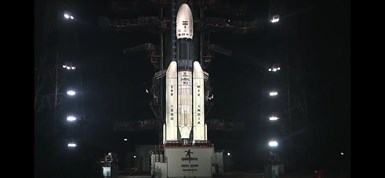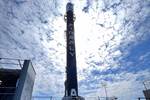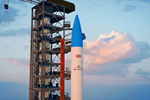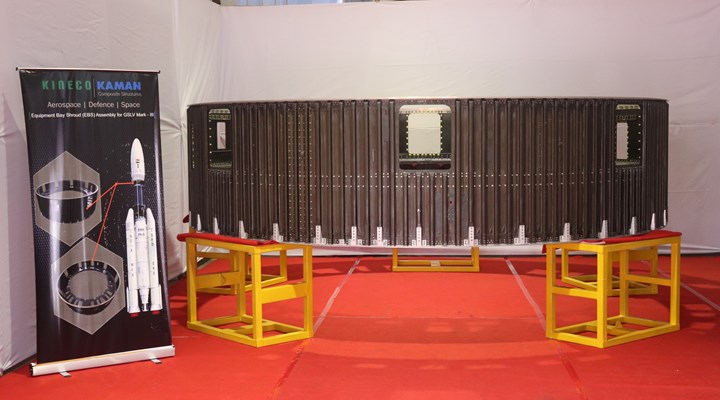ISRO/NSIL deploys 36 OneWeb satellites in first commercial LMV-3 rocket launch
Kineco Kaman supplied the LVM-3 composite equipment bay shroud assemblies and other CFRP components that made the launch possible.
On Oct. 23, the Indian Space Research Organisation (ISRO, Bengaluru) and NewSpace India Ltd. (NSIL, Bengaluru) successfully deployed 36 OneWeb (London, U.K.) broadband satellites to low Earth orbit (LEO). The satellites were launched via the ISRO’s composites-intensive Launch Vehicle Mark-III (LVM-3), a redesignated version of the Geosynchronous Launch Vehicles (GSLV Mk-III), from the Satish Dhawan Space Centre (SDSC-SHAR) in Sriharikota, India. It being the first commercial launch for LVM-3, IRSO says the rocket has made its foray in the global commercial launch service market.
During the deployment, OneWeb’s satellites separated successfully from the rocket and were dispensed in nine phases over a period of 1 hour and 15 minutes, with signal acquisition on all 36 satellites confirmed. The moment marked OneWeb’s 14th launch to deliver high-speed, low-latency connectivity worldwide, bringing the constellation to 462 satellites.
LVM-3 is reported to be the heaviest rocket — with a payload capacity of 10 tonnes — ISRO has launched to this date. Each OneWeb satellite it carried weighed 150 kilograms. Unique to vehicle is its cryo stage, which was designed to orient and re-orient in an orthogonal direction to meet the customer requirements of injecting satellites precisely and with a gap to avoid collision.
“This is the first commercial launch of LVM-3 with its heaviest payload to LEO. The LVM3 was conceived primarily for launching geo-stationary satellites with a payload capacity of four tonnes, which can be used for launching six-tonne payloads for LEO,” Shri. Somanath S, secretary, Department of Space and Chairman, ISRO, says.

Photo Credit: ISRO/NRIL
The launch vehicle was a success in part to Kineco Kaman’s (Goa, India) supply of composite equipment bay shroud (EBS) assemblies and other C25 carbon fiber-reinforced polymer (CFRP) elements, which the company manufactured and delivered over the course of 18 months. Kineco Kaman is to supply four more EBS assemblies to ISRO by December 2023 (learn more, “Kineco Kaman earns ISRO contract for India’s first human space flight mission”).
The EBS assembly is a complex, 4-meter-diameter CFRP hat-stiffened structure (see opening image) that houses the GSLV’s sensitive equipment. The composite segments are fabricated using carbon fiber prepreg and aluminum core material cured via autoclave and then assembled using various titanium and aluminum hardware to tight tolerances.
LVM-3 will be used for India’s maiden human space flight mission –Gaganyaan, scheduled by 2024. Kineco Kaman will also be a part of this landmark mission, having bagged the contract from Vikram Sarabhai Space Centre (VSSC), a division of ISRO, for the supply of crew orbiter module adaptor assemby (OMA).
Moreover, over the coming months, OneWeb will continue its focus on the launch program and will also work with key distribution partners and customers to roll out connectivity solutions where its services are live.
Related Content
-
Manufacturing the MFFD thermoplastic composite fuselage
Demonstrator’s upper, lower shells and assembly prove materials and new processes for lighter, cheaper and more sustainable high-rate future aircraft.
-
Composites manufacturing for general aviation aircraft
General aviation, certified and experimental, has increasingly embraced composites over the decades, a path further driven by leveraged innovation in materials and processes and the evolving AAM market.
-
Next-generation airship design enabled by modern composites
LTA Research’s proof-of-concept Pathfinder 1 modernizes a fully rigid airship design with a largely carbon fiber composite frame. R&D has already begun on higher volume, more automated manufacturing for the future.















.jpg;maxWidth=300;quality=90)

